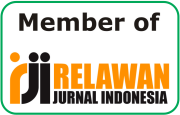Dilālah Maqomlafaz Tasbih in the Perspective of the Quran
Abstract
The word tasbih, as an expression of praise for the greatness of Allah, has an important position in the teachings of the Koran. Although tasbih is generally understood as a form of exaltation, in the Al-Quran, tasbih contains various maqom that reflect spiritual dimensions and deeper understanding. This research aims to examine the maqom of lafaz tasbih in the perspective of the Koran, with a focus on the four main maqom: Maqom tanzih (gift of purity), maqom at-Thalab (supplication), maqom nafi (disclaimer), and maqom al-Ta'ajjub (surprise). The method used is qualitative with a descriptive-analytic approach to understand the context and purpose of using tasbih lafaz in the verses of the Koran. The results of the research show that the pronunciation of tasbih has varied functions according to the context, including as a form of glorification of Allah's holiness (maqom Tanzih), a request for His mercy (maqom at-Thalab), an affirmation of the denial of bad qualities for Allah (maqom Nafi), and an expression of surprise at His power (maqom al-Ta'ajjub). In conclusion, understanding the maqom maqom of tasbih provides depth in the practice of worship and appreciation of the nature of God's greatness which is reflected in every word of the tasbih.
Keywords
Full Text:
PDFReferences
Al-Bagawī, Abū Muḥammad al-Ḥusain bin Mas’ūd bin Muḥammad bin al-Farā’. Ma’ālim al-Tanzīl Fī Tafsīr Al-Qur’ān. Dār Iḥyā’ al-Turāṡ al-‘Arābī, 1999.
Al-Qurṭubī, Abū ‘Abdillāh Muḥammad bin Aḥmad al-Anṣārī. Al-Jāmi’ Li Aḥkām al-Qur’ān. Edited by Aḥmad Al-Birdūnī and Ibrāhīm Aṭfīsy. Dār al-Kutb al-Miṣriyyah, 1964.
Al-Sa’dī, ‘Abdurraḥmān bin Nāṣr bin ‘Abdullah. Taisīr Al-Karīm al-Raḥmān Fī Tafsīr Kalām al-Manān. Muassasah al-Risālah, 2000.
Al-Ṭabarī, Abū Ja’far Muḥammad bin Jarīr. Jāmi’ al-Bayān ‘an Ta’Wīl al-Qur’an. Dār al-Hijr, 2001.
Al-Zuḥailī, Wahbah. Tafsīr Al-Munīr Fī al-‘Aqīdah Wa al-Syarī’Ah Wa al-Manhaj. Dār al-Fikr, 2009.
Fadhli, Muhajirul, and Syarifah Salsabila. “Pemaknaan Kata Tasbih Pada Awal Surat Al-Qur’an.” TAFSE: Journal of Qur’anic Studies 5, no. 1 (2022): 135. https://doi.org/10.22373/tafse.v5i1.12550.
Hamka. Tafsir Al-Azhar. Pustaka Nasional PTE LTD Singapura, 1990.
Hayati, Riska, Nova Ratna Sari Harahap, and Erlina. “Analisis Komponen Dilalah Dalam Bahasa Arab: The Analysis Of Dilalah Component In Arabic Language.” El-Jaudah : Jurnal Pendidikan Bahasa Dan Sastra Arab 2, no. 2 (2021): 95–117. https://doi.org/10.56874/faf.v2i2.903.
Kamal, M. Syaiful. “Perbandingan Struktur Kata Sifat Dalam Bahasa Arab Dengan Bahasa Indonesia.” LISANUNA: Jurnal Ilmu Bahasa Arab Dan Pembelajarannya 8, no. 2 (2019): 184. https://doi.org/10.22373/ls.v8i2.4562.
Kaṡīr, Abū al-Fadā’ Ismā’īl bin ‘Umar bin. Tafsīr Alquran Al-‘Aẓīm. Edited by Abdul Ghoffar and Abu Ihsan Al-Atsari. Pustaka Imam asy-Syafi’i, 2004.
Khalis, Muhammad, Nur Alia, Hajrah, Haerul, and Sunarti Syukur. “Tasybih Dalam Ilmu Al-Balaghah.” AL-MUALLAQAT: Journal of Arabic Studies 2, no. 2 (2023): 2828–562.
Khoiruddin, Heri, Rohimin Rohimin, and Mohamad Anton Athoillah. “Historical Socio Analysis in the Interpretation of the Quran: Case Study of Legal Verses.” ESENSIA: Jurnal Ilmu-Ilmu Ushuluddin 20, no. 2 (2019): 199–208. https://doi.org/10.14421/esensia.v20i2.2108.
Kusmardani, Alex, Mohamad Athoilah, and Mohamad Sar’an. “Tafsir Ayat Ahkam Dalam Perspektif Dilalah Manthuq Dan Mafhum.” Jurnal Syntax Transformation 3, no. 2 (2022): 169–89. https://doi.org/10.46799/jst.v3i2.509.
Mohd Akib, Mohd Manawi, Farah Mohd Ferdaus, and Hamdi Ishak. “Spiritual Strengthening of Man Through Prayer of Worship.” Afkar: Jurnal Akidah Dan Pemikiran Islam 24, no. 1 (2022): 381–408. https://doi.org/10.22452/afkar.vol24no1.11.
Nurwahdi. “Gaya Tasybih Dalam Al-Quran.” Tajdid: Majalah Ilmu Pengetahuan Dan Pemikiran Keagamaan 16, no. 2 (2013): 1–16. https://doi.org/10.15548/tajdid.v16i2.100.
Quṭhb, Sayyid. Tafsīr Fī Ẓilāl Al-Qur’ān. Edited by As’ad Yasin, Atrdul Halyie al Kattani, Idris Abdul Shomad, et al. Gema Insani, 2004.
Rachim, Asfa Kurnia, and Muhammad Nuruddien. “Mengungkap Rahasia Ayat-Ayat Tasybih Dalam Al-Qur’an Juz 27.” Al-Mustafid: Jurnal of Quran and Hadith Studies 2, no. 1 (2023): 37–51. https://doi.org/10.30984/mustafid.v2i1.584.
Rohman, Abdur. “Studi Penafsiran Tasbih Alam Semesta Dalam Tafsir Mafatih Al-Ghaib.” Al Karima : Jurnal Studi Ilmu Al Quran Dan Tafsir 2, no. 1 (2020): 69–76. https://doi.org/10.58438/alkarima.v2i1.88.
Saramifar, Younes. “Crafting Sacrality from the Tensile Life of Objects: Learning about the Material Life of Prayer Beads from a Khaksari Sufi Murshid.” Contemporary Islam 12, no. 1 (2018): 39–55. https://doi.org/10.1007/s11562-017-0407-5.
Shihab, Quraish M. Tafsir Al-Mishbah: Pesan, Kesan Dan Keserasian Al-Qur’an. Lentera Hati, 2010.
Solihin, Misbakhul khaer, and Mei Santi. “Menyingkap Fenomena Alam Semesta Bertasbih Dan Bersujud (Studi Korelasi Antara Ayat-Ayat Kauniyah Dengan Ayat-Ayat Qauliyah).” AL-AQWAM: Jurnal Studi Al-Quran Dan Tafsir 2, no. 2 (2023): 119–36. https://doi.org/10.58194/alaqwam.v2i2.1201.
Yusuf, M. Fajri, Bona Bargot Riezky Nagabe Siregar, and Alwi Padly Harahap. “Implementation of Hadith as a Foundation for Deradicalization in Contemporary Islamic Education Curriculum.” At-Turāṡ: Jurnal Studi Keislaman 11, no. 2 (2024): 160–77. https://doi.org/10.33650/at-turas.v11i2.9358.
Yusuff, Mohd Sholeh Sheh, Yusuf Haji-Othman, and Mat Rani Abdul Manaf. “Tadabbur Surah Al-Hadid Using the Quran Tadabbur Digital Application: A Critical Analysis.” International Journal of Academic Research in Business and Social Sciences 11, no. 4 (2021): 1138–43. https://doi.org/10.6007/IJARBSS/v11-i4/9776.
Zakaria, Aceng. “Studi Analisis Peristiwa Isra’ Mi’raj Nabi Muhammad Menurut Al-Qur’an Dan Hadits.” Al-Tadabbur: Jurnal Ilmu Al-Qur’an Dan Tafsir 4, no. 1 (2019): 99–112. https://doi.org/10.30868/at.v4i01.428.
Zakariyā, Abū Ḥusain Aḥmad bin Farīs bin. Mu’jam Maqāyis al-Lugah. Dār al-Fikr, 1979.
DOI: http://dx.doi.org/10.35931/aq.v19i5.4840
Refbacks
- There are currently no refbacks.
Copyright (c) 2025 Abdul Halim

This work is licensed under a Creative Commons Attribution 4.0 International License.
Al Qalam: Jurnal Ilmiah Keagamaan dan Kemasyarakatan
index by:
Publish by:
Sekolah Tinggi Ilmu Al-Qur'an Amuntai
Contact us:
Address: Jl. Rakha Pakapuran, Amuntai Utara
Kabupaten : Hulu Sungai Utara
Kode Pos : 71471
Provinsi : Kalimantan Selatan
Telephone : 085251613000
Email: hafizhihusinsungkar@gmail.com

This work is licensed under a Creative Commons Attribution 4.0 International License


